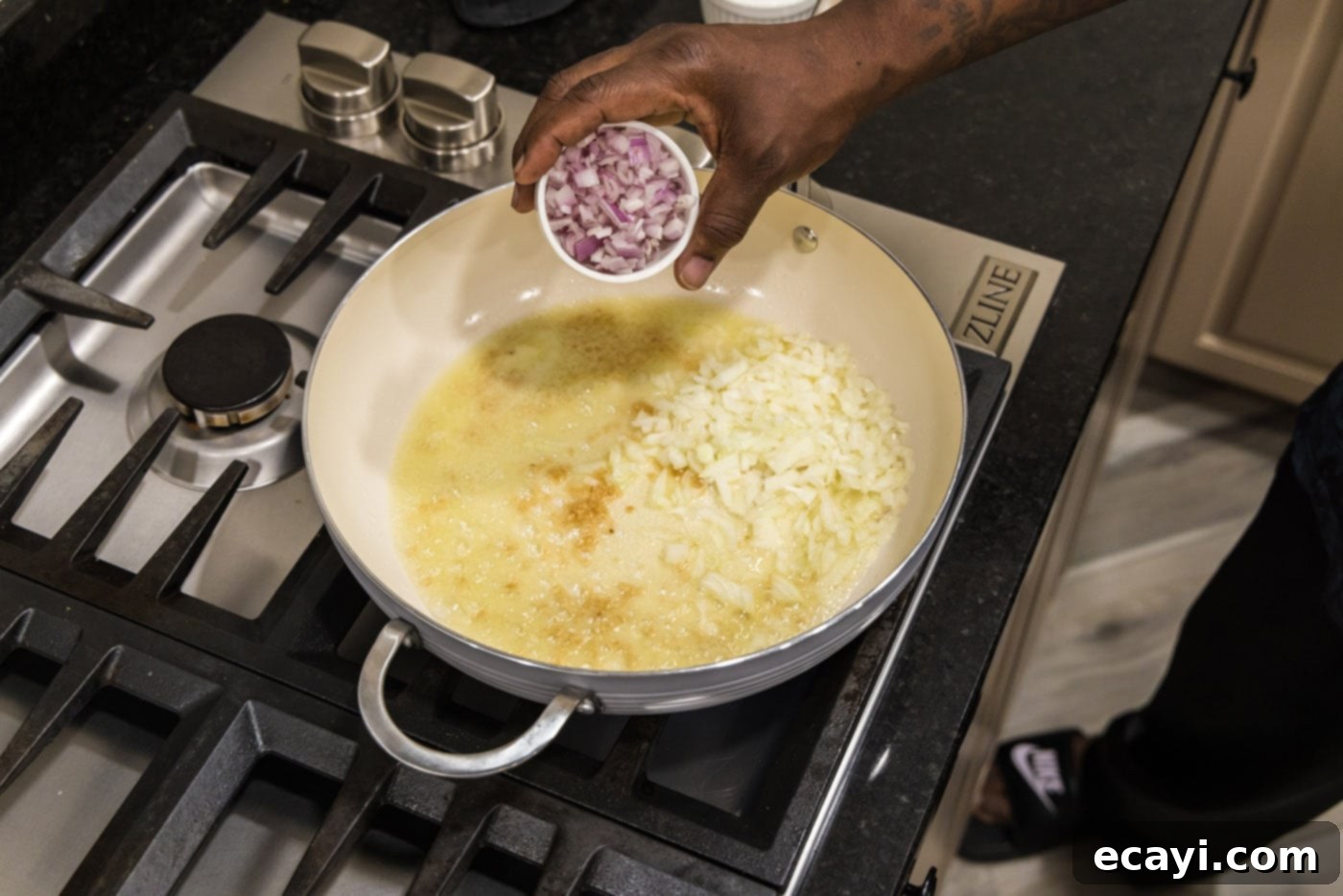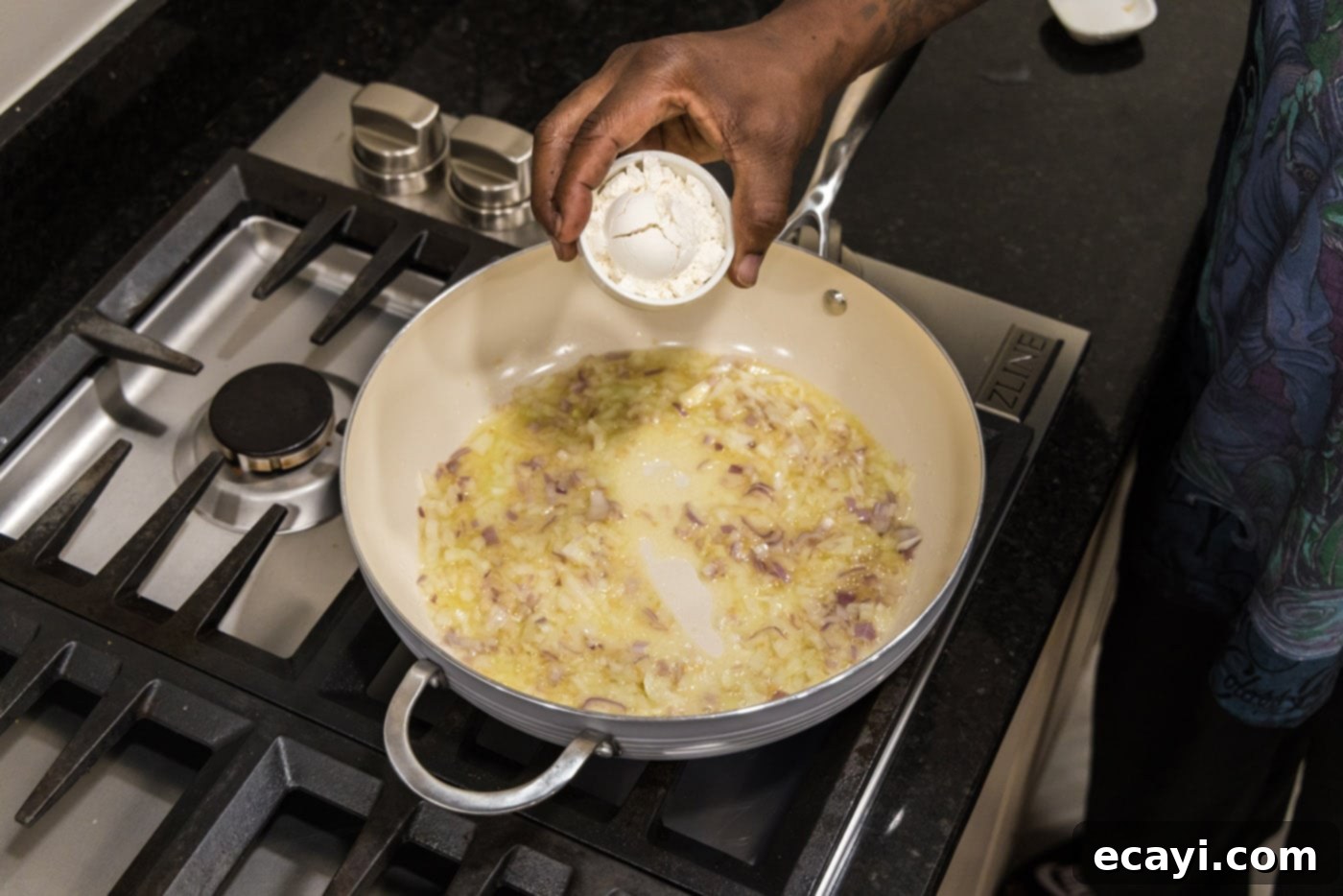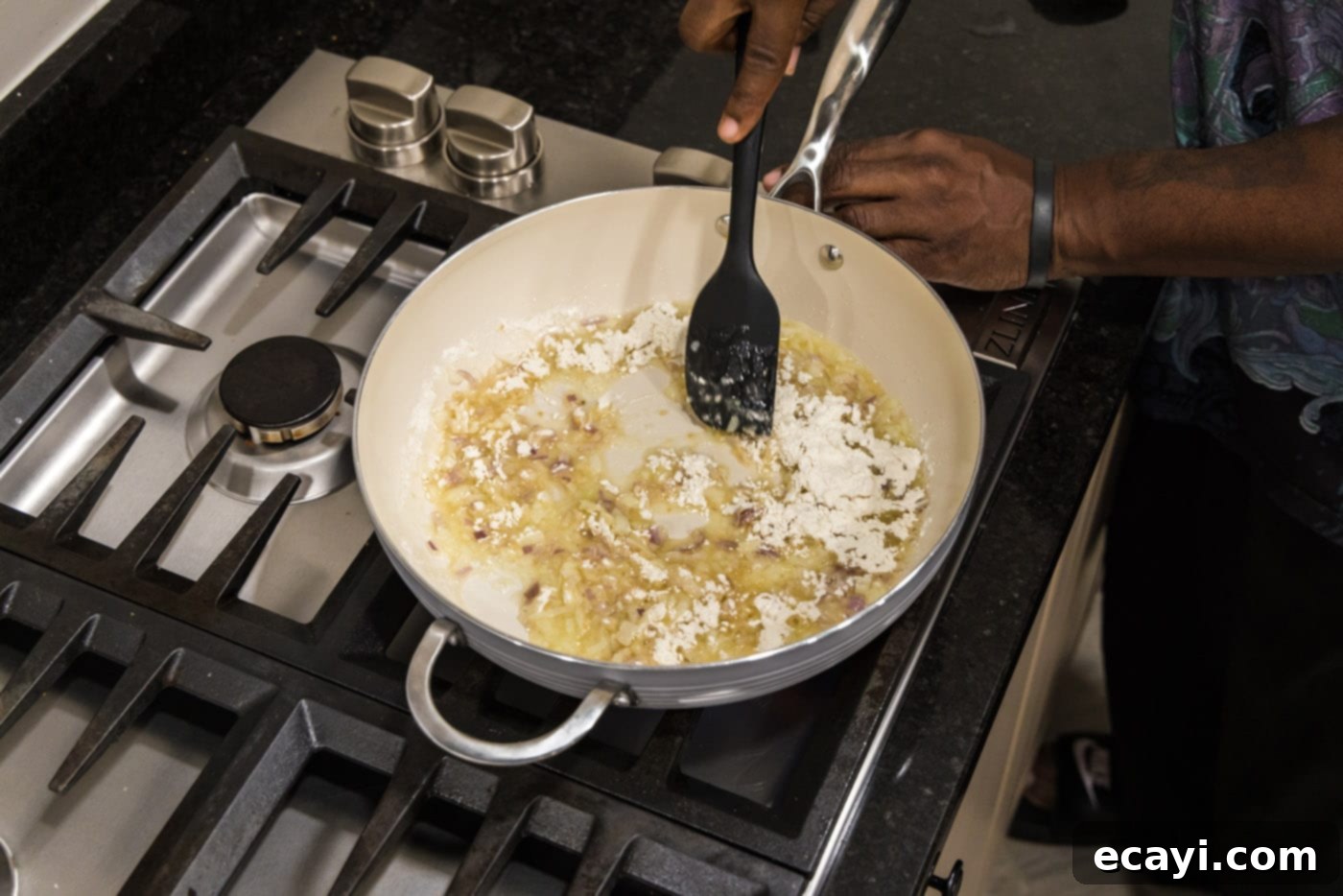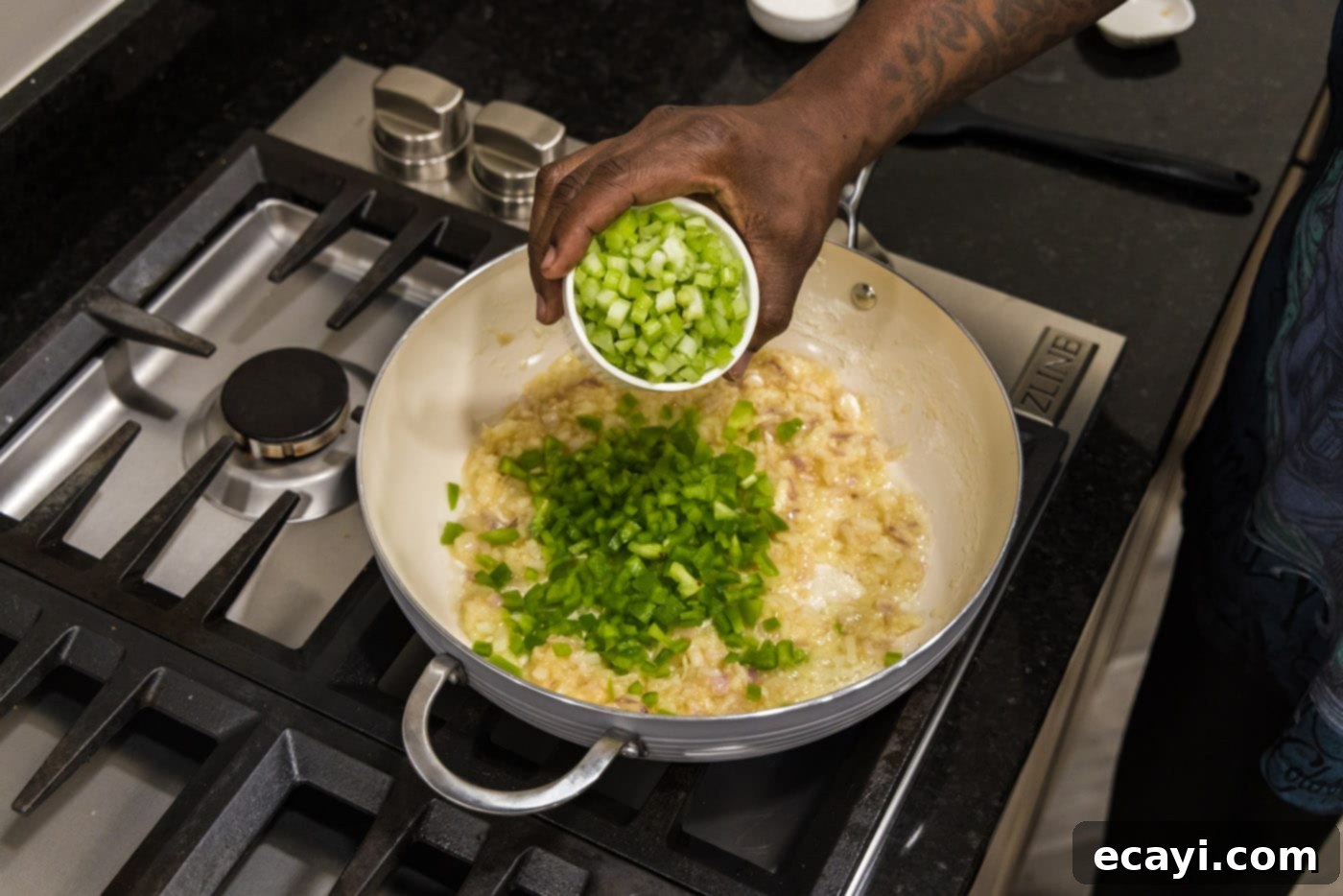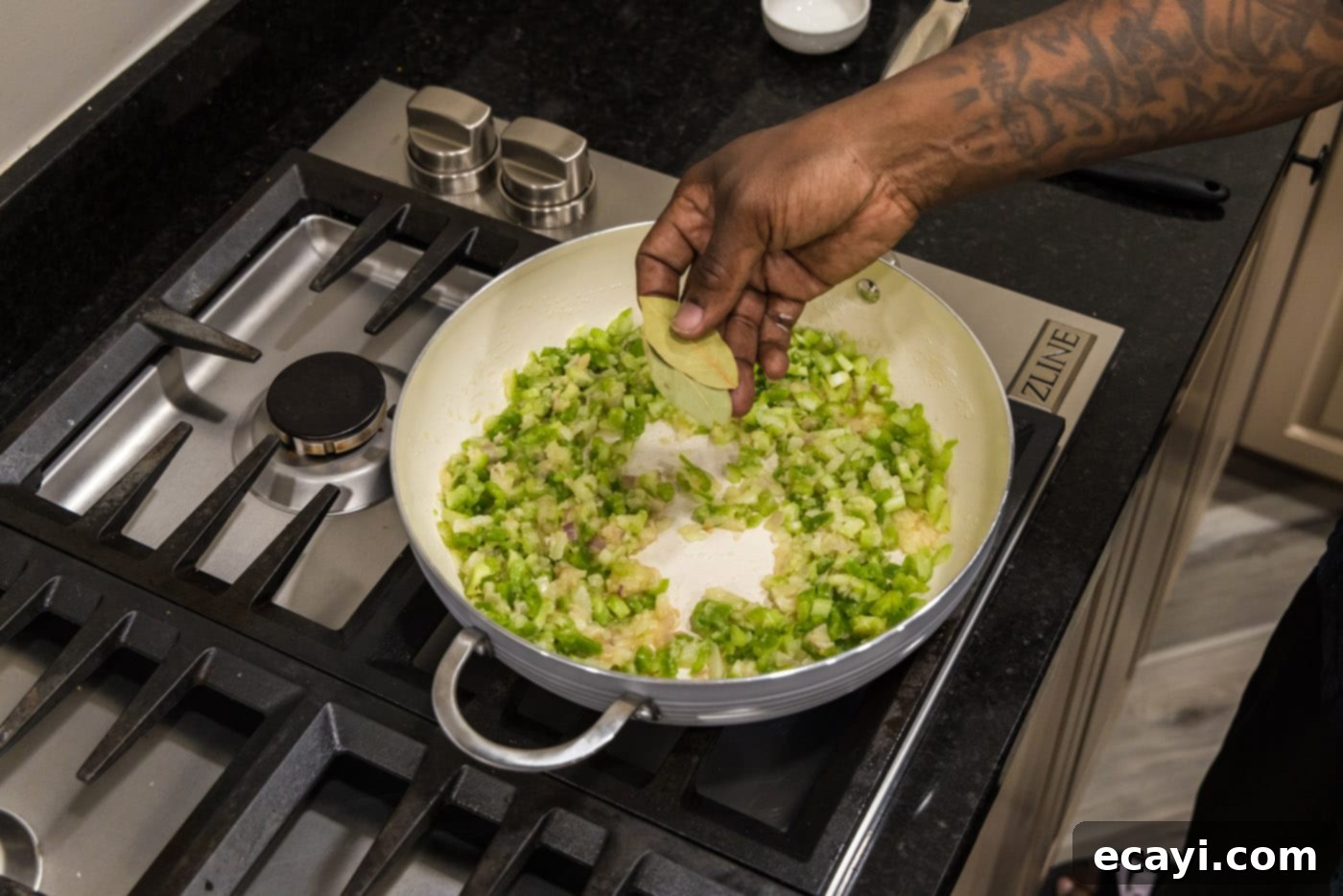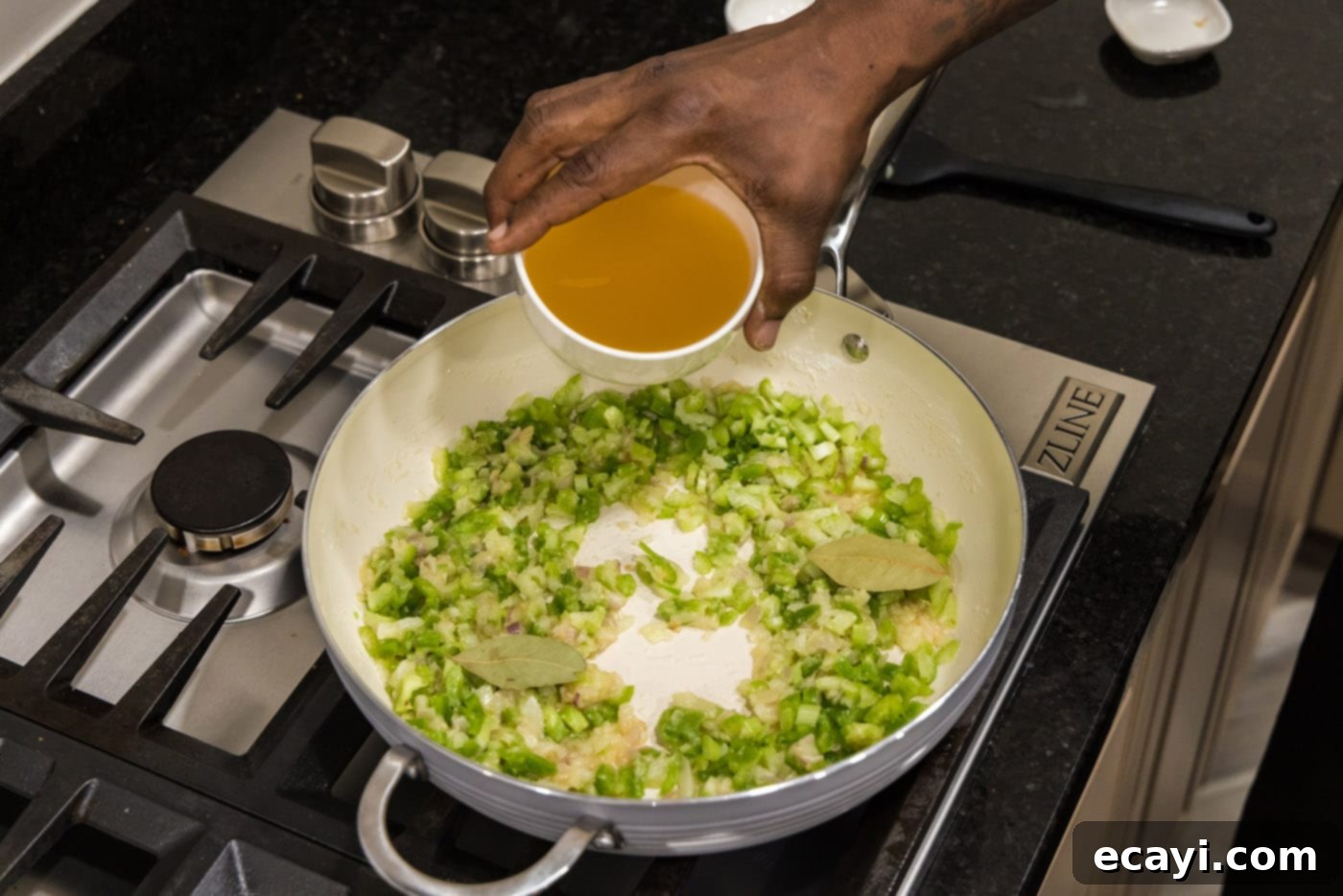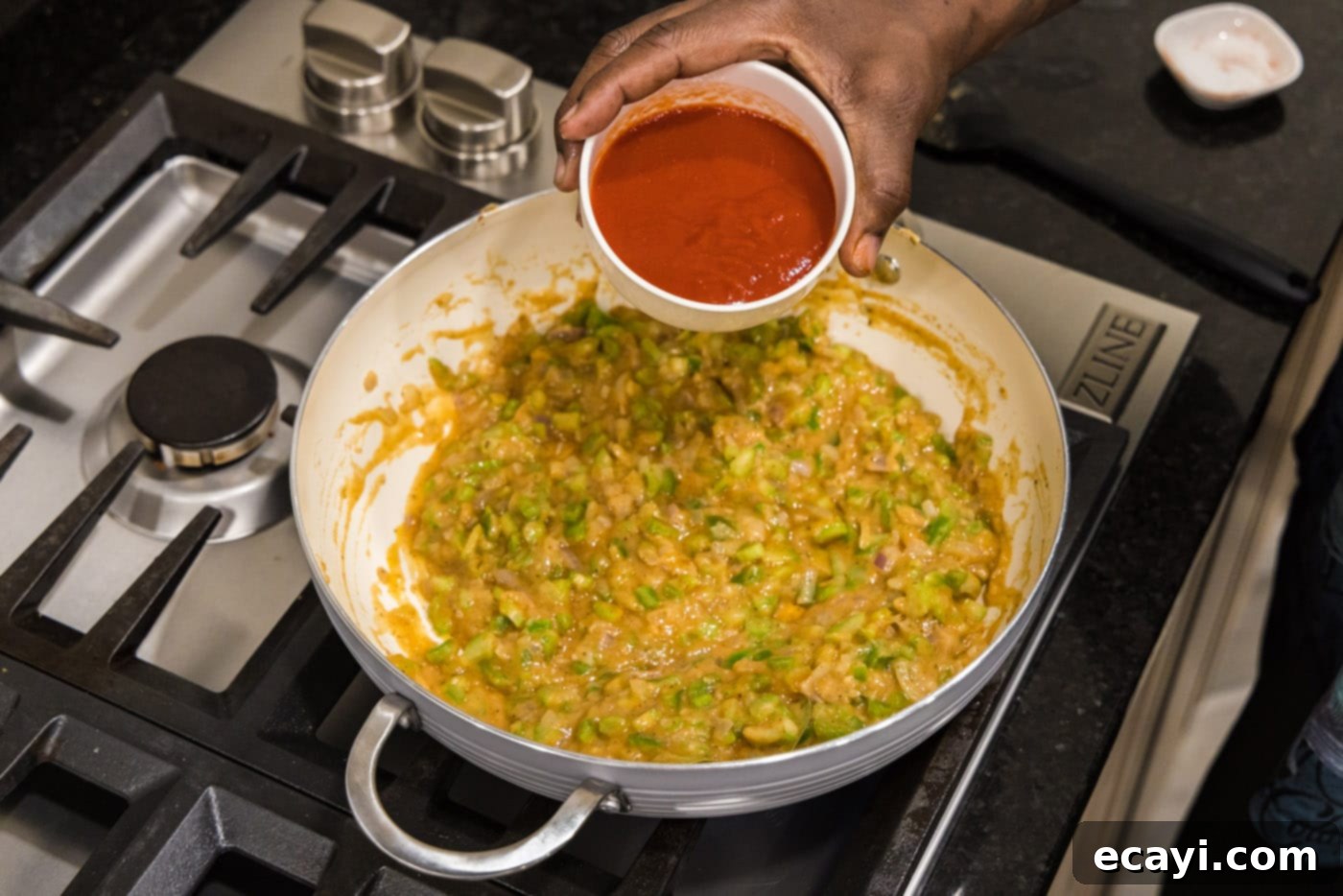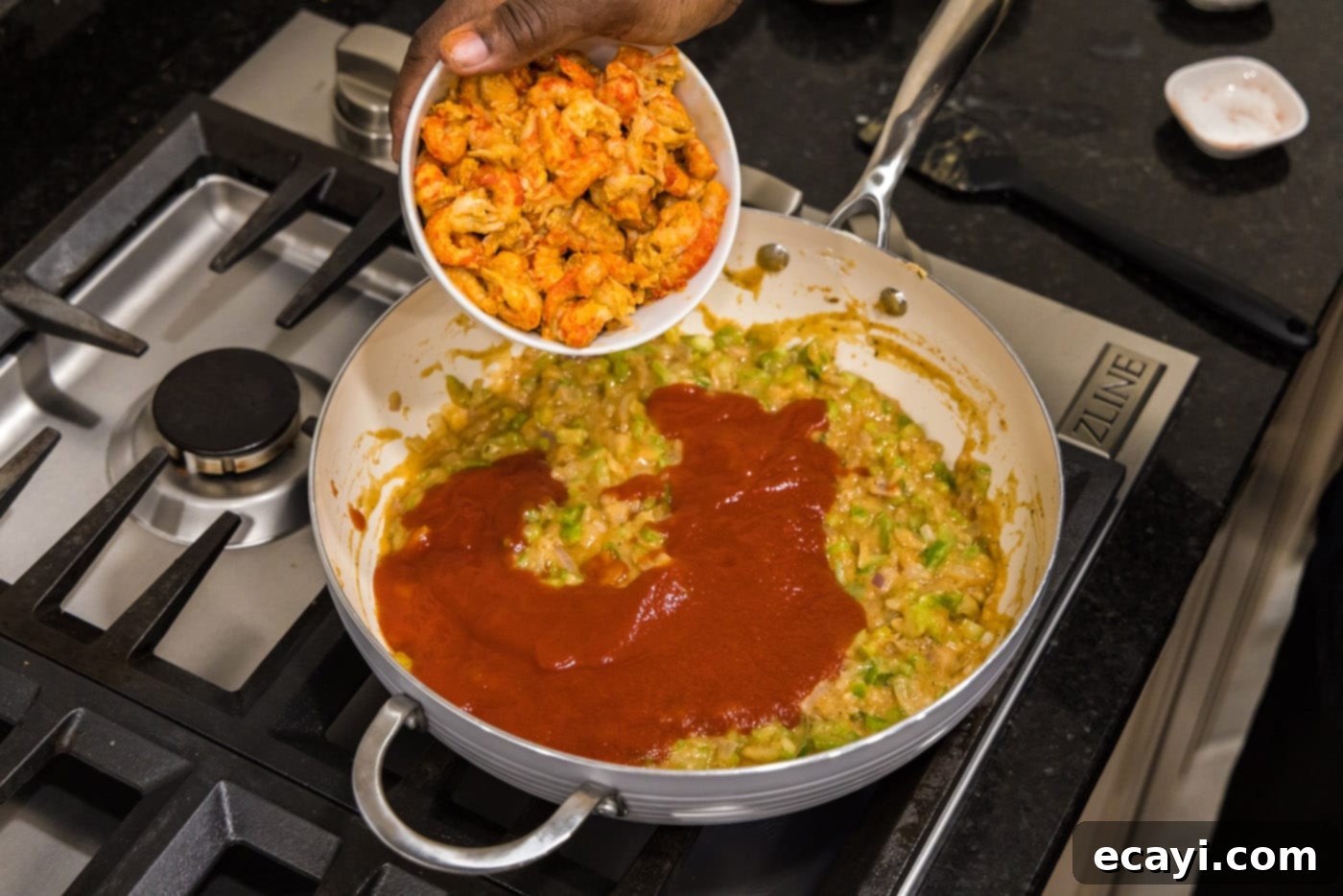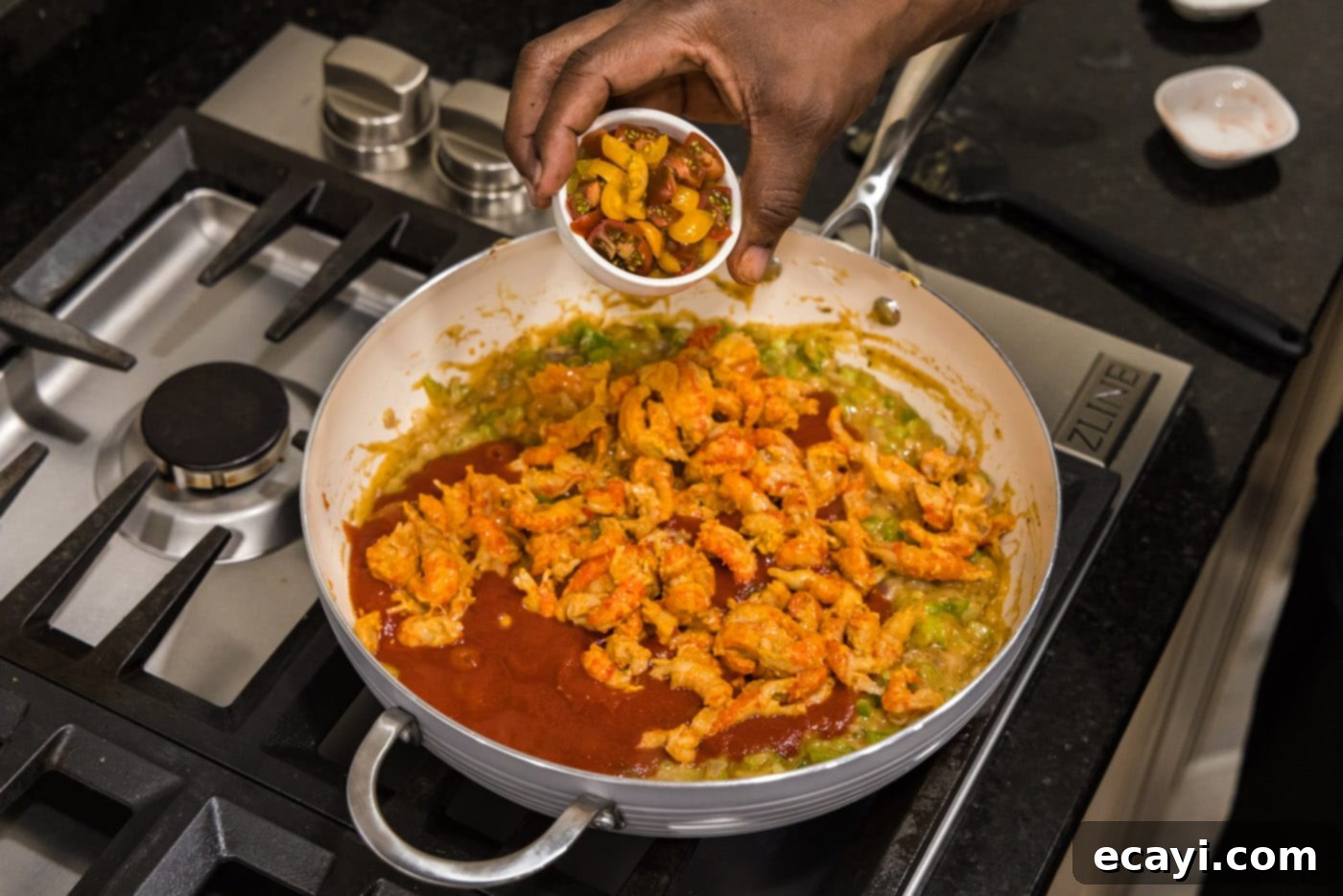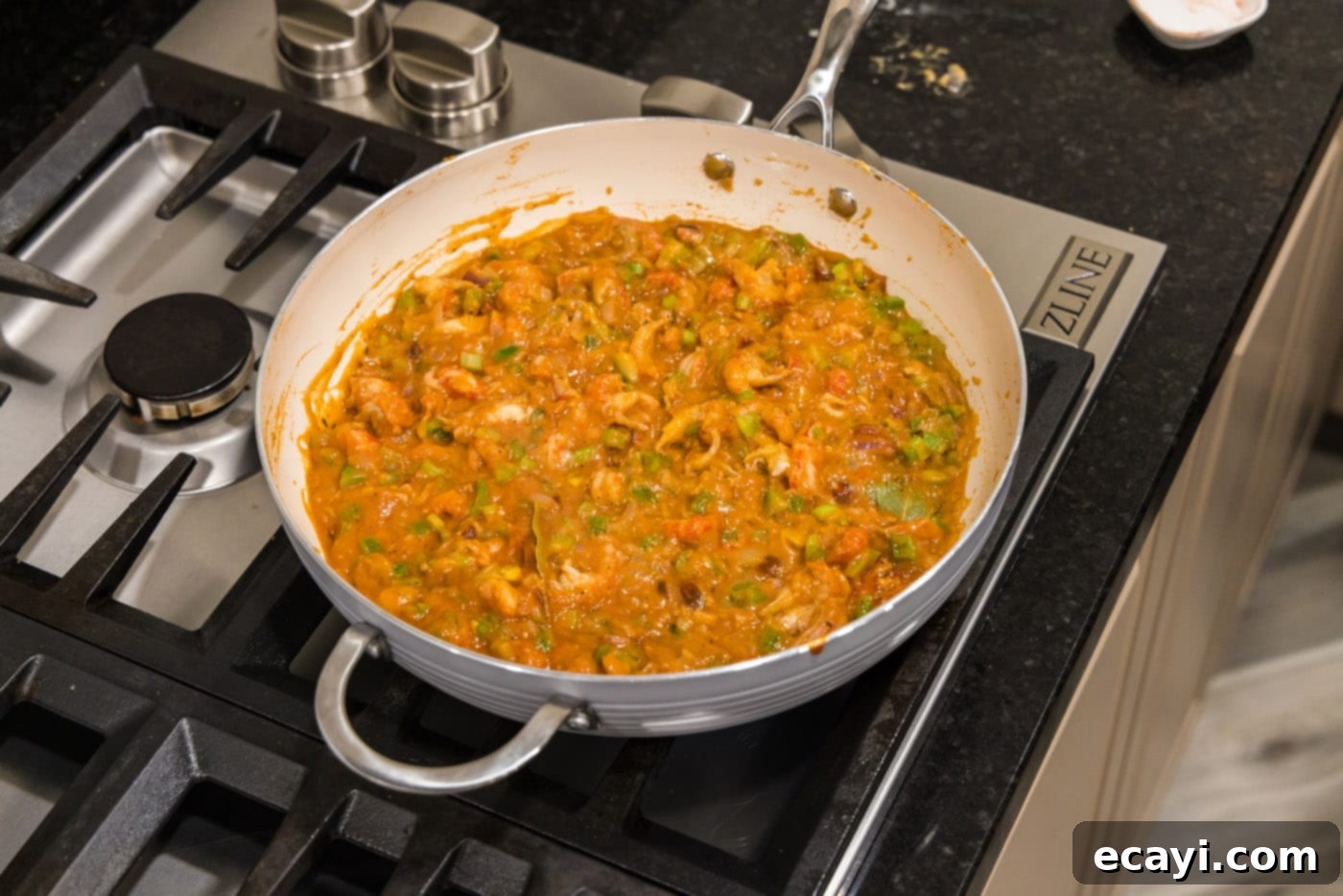Easy & Flavorful Crawfish Etouffee Recipe: A Quick Southern Comfort Food Classic
Prepare to tantalize your taste buds with this incredibly easy and exceptionally flavorful Crawfish Etouffee. This classic Southern stew features succulent crawfish tails smothered in a rich, vibrant tomato-based sauce. The foundation of this dish is built upon the “holy trinity” of Cajun and Creole cooking – onion, celery, and bell pepper – which are sautéed to perfection alongside sweet cherry tomatoes and a generous blend of robust Cajun and Old Bay seasonings. What makes this recipe truly special is its speed; you can have this authentic Louisiana comfort food on your table, from pan to plate, in less than 30 minutes. It’s the perfect weeknight meal that tastes like it simmered all day, bringing the soulful flavors of the bayou right into your kitchen with minimal effort.
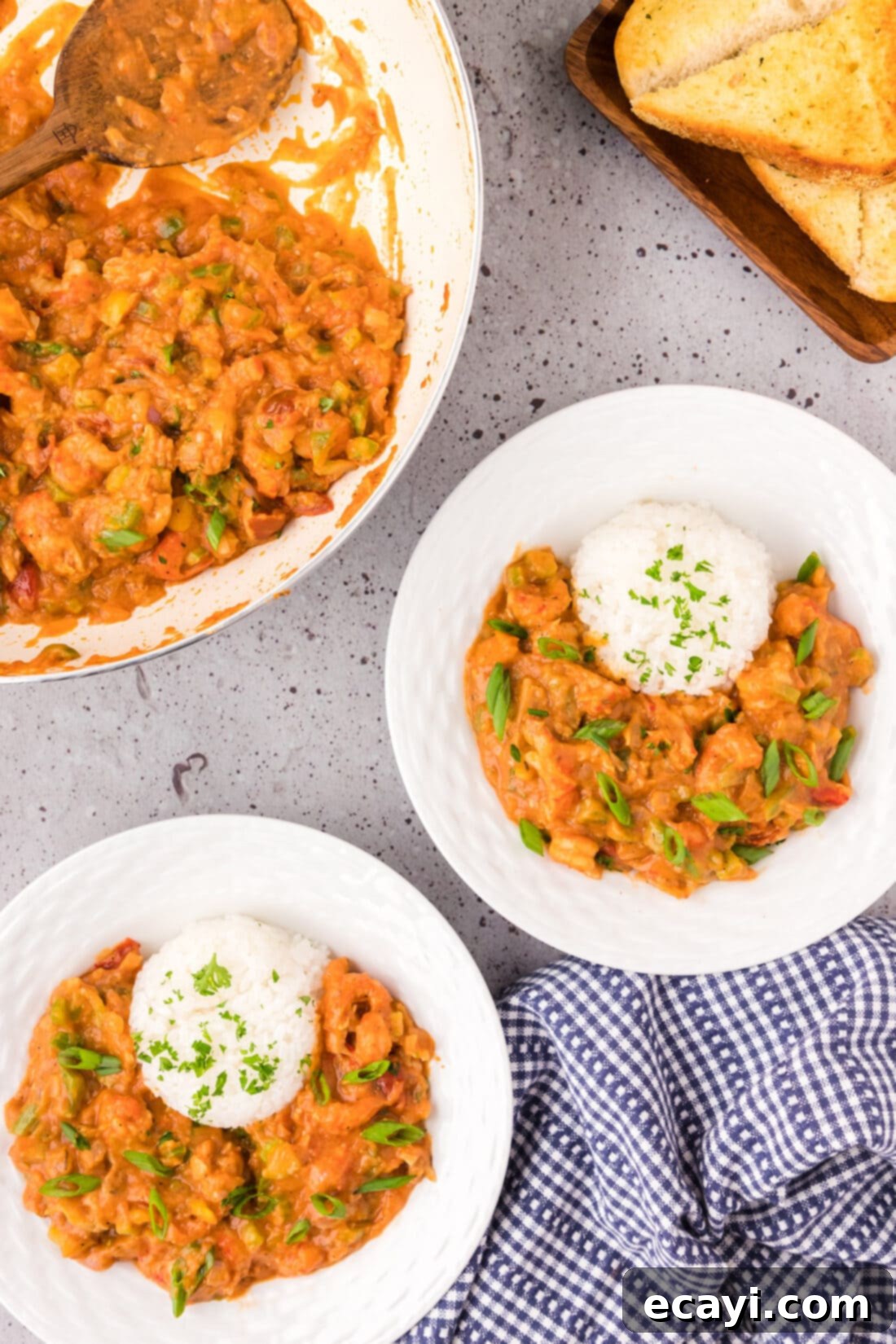
Why This Crawfish Etouffee Recipe Works So Well
This Crawfish Etouffee stands out as a culinary gem, offering a perfect blend of authentic Louisiana flavors with surprising ease and speed. Much like its popular cousin, Shrimp Etouffee, this crawfish version begins with the bedrock of Cajun and Creole cuisine: the aromatic “holy trinity” of vegetables – onion, celery, and bell pepper. This foundational trio creates a deep, savory base that is essential for any truly authentic etouffee.
Our Louisiana Crawfish Etouffee bursts with incredibly rich flavors, showcasing tender, delicate crawfish meat. The crawfish is simmered in a luscious, tomato-based sauce, generously seasoned with both Cajun spice and the distinctive notes of Old Bay seasoning. This combination delivers a complex flavor profile that is both spicy and savory, with a hint of briny depth from the crawfish itself. What sets this recipe apart from some traditional Cajun versions is its inclusion of tomatoes, which leans into the Creole style, adding a touch of acidity and sweetness that brightens the entire dish and creates a beautiful, reddish-brown hue. While traditional Cajun etouffee often relies solely on a dark roux and fat for its gravy-like consistency, this recipe cleverly combines elements to offer a full-bodied, flavorful experience without the extensive cooking time typically associated with a very dark roux.
Crawfish etouffee is a versatile dish with variations found across countless Southern households. At its core, it always features succulent crawfish meat, along with the indispensable onion, celery, and bell peppers. Creole versions, like ours, frequently incorporate tomatoes into the sauce, contributing to a vibrant color and tangy depth. In contrast, classic Cajun versions often focus on achieving a rich, gravy-like sauce solely through a meticulously prepared roux and flavorful fats, eschewing tomatoes entirely. Regardless of regional nuances, a hearty crawfish etouffee remains a beloved Southern staple, enjoyed enthusiastically both during peak crawfish season and as a delicious way to utilize leftover crawfish meat. This particular recipe masterfully marries these traditions, delivering a deeply satisfying and quick meal that captures the essence of Louisiana comfort food.

Essential Ingredients for Your Crawfish Etouffee
To craft this authentic and delicious crawfish etouffee, you’ll need a selection of fresh and flavorful ingredients that bring the soul of Louisiana cuisine to life. The full list of measurements, specific ingredients, and detailed step-by-step instructions are conveniently provided in the printable recipe card at the very end of this post. For now, let’s explore the key components that make this dish so irresistible.
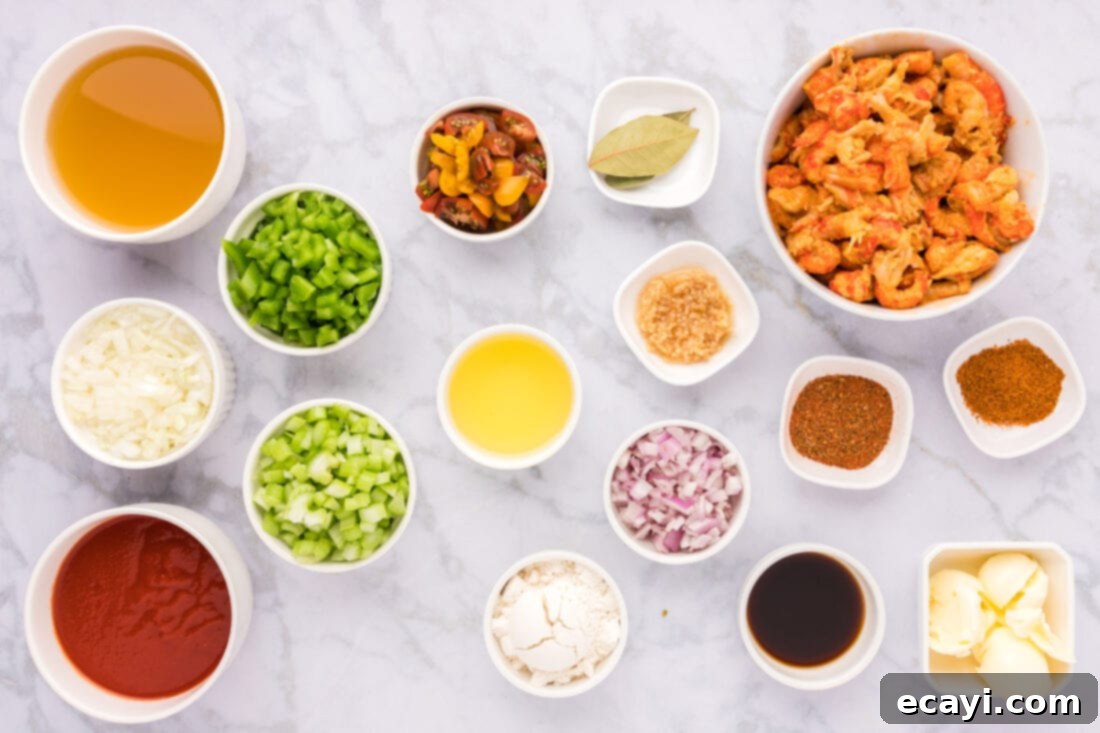
Ingredient Information and Smart Substitution Suggestions
Understanding each ingredient’s role and potential alternatives can make your cooking experience more flexible and enjoyable. Here’s a closer look at the key components of our crawfish etouffee:
CRAWFISH: The star of our show! For convenience and accessibility, cooked crawfish tail meat is typically sold in packages within the freezer section of most grocery stores. When purchasing, look for high-quality, wild-caught Louisiana crawfish if possible, as they offer the most authentic flavor. Ensure the crawfish is thawed completely before use to prevent excess water from diluting your sauce. If you have the experience and desire to cook raw crawfish, you are welcome to do so, either by boiling and peeling them beforehand or by incorporating them into the sautéing process alongside the garlic, onion, and shallots. However, for a quick and easy recipe, pre-cooked tails are perfect. If crawfish is unavailable, shrimp or even chicken can be used as a substitute, though the flavor profile will, of course, be different.
VEGETABLES: The heart and soul of this Southern stew, starting with the indispensable “holy trinity” of Cajun cooking: crisp celery, pungent onion, and vibrant bell peppers (we use green bell peppers for classic flavor, but red or yellow can add sweetness and color). This aromatic base builds an incredible depth of flavor. Beyond the trinity, we elevate the taste further by adding finely minced shallots, which offer a milder, sweeter onion flavor, and minced garlic, providing that essential pungent kick. To lend a touch of sweetness and acidity, and to align with the Creole-style etouffee, we’ve also included fresh, chopped cherry tomatoes. These burst when cooked, releasing their juices and contributing to the rich, tomato-based sauce. For an extra layer of savory depth, don’t forget the bay leaves, which infuse the sauce with a subtle herbaceous note during simmering.
Roux: A fundamental element in Cajun and Creole cuisine, our roux is made from a simple combination of butter and all-purpose flour, cooked until it reaches a beautiful light brown color. The roux not only acts as a thickening agent, giving the etouffee its desirable hearty consistency, but also adds a nutty, toasted flavor that enriches the entire dish. While some traditional rouxs are cooked until very dark, a lighter roux is sufficient here as the tomato sauce will provide much of the color.
Seasonings and Liquids: A medley of spices and liquids brings this etouffee to life. Old Bay seasoning provides a unique blend of savory, spicy, and herbaceous notes, perfectly complementing seafood. Cajun seasoning, with its fiery kick and complex spice blend, delivers the authentic Louisiana heat and flavor. A touch of Worcestershire sauce adds an umami depth and savory complexity. For the liquid base, chicken stock provides richness, though seafood stock can be used if preferred for an even more pronounced seafood flavor. Finally, tomato sauce forms the core of our Creole-style gravy, offering a tangy, sweet, and robust backdrop for the crawfish and vegetables.
Step-by-Step Guide: Crafting Your Delicious Crawfish Etouffee
These detailed step-by-step photos and instructions are designed to guide you visually through the process of making this incredible crawfish etouffee. For those who prefer a concise overview, you can easily Jump to Recipe to access the printable version of this recipe, complete with precise measurements and full instructions, located at the bottom of this page.
- In a large heavy-bottomed skillet or Dutch oven, begin by melting the butter over medium-high heat. Once the butter is melted and slightly shimmering, add the olive oil. Allow it to heat for about 30 seconds. Next, add the minced garlic, diced onion, and minced shallots to the skillet. Sauté these aromatics, stirring frequently, until the onion becomes translucent and tender, and the garlic and shallots are fragrant, typically taking about 3-5 minutes. This step is crucial for building the foundational flavor of your etouffee.

- Once the aromatics are softened, it’s time to create the roux. Sprinkle the all-purpose flour evenly over the sautéed vegetables and melted fat in the skillet. Immediately begin stirring vigorously with a whisk or spatula. Continue to stir and cook the flour and fat mixture for 2-3 minutes, ensuring it cooks thoroughly and takes on a light golden-brown color. This process cooks out the raw flour taste and creates the thickening base for your sauce. Keep stirring to prevent scorching.


- Now, add the remaining “holy trinity” components: the diced green bell pepper and diced celery, along with the bay leaves, to the roux mixture. Stir well to combine all the vegetables with the developing sauce base. Pour in the chicken stock, stirring constantly to ensure there are no lumps and the roux fully dissolves into the liquid, creating a smooth, rich sauce. Bring the mixture to a gentle simmer and cook for an additional 2-3 minutes, stirring occasionally. This allows the vegetables to soften slightly and the flavors to begin melding together beautifully.



- At this stage, it’s time to introduce the primary flavorings and the star ingredient. Add the Old Bay seasoning, Cajun seasoning, Worcestershire sauce, and tomato sauce to the simmering mixture. Stir everything until thoroughly combined. Finally, gently fold in the thawed crawfish tail meat and the chopped cherry tomatoes. Stir carefully to ensure the crawfish and tomatoes are fully incorporated into the rich, aromatic sauce. The crawfish is already cooked, so we’re simply aiming to heat it through and allow it to absorb the wonderful flavors of the etouffee.



- Reduce the heat to low and allow the etouffee to gently simmer for 5-7 minutes. This short simmering period is sufficient to heat the crawfish through, soften the cherry tomatoes slightly (allowing them to burst and release their sweet juices), and most importantly, enable all the incredible flavors to fully meld and deepen. Taste and adjust seasonings as needed, adding more Cajun seasoning if you prefer a spicier kick, or salt and pepper to taste. Once simmering is complete, remove the bay leaves before serving. Your flavorful, homemade crawfish etouffee is now ready to be enjoyed!

Frequently Asked Questions & Expert Tips for Perfect Crawfish Etouffee
Proper storage is key to enjoying your delicious crawfish etouffee for days to come. Once the etouffee has cooled completely to room temperature (this is important to prevent bacterial growth), transfer it to an airtight container. Store it in the refrigerator for up to 2-3 days. When reheating, it’s best to do so gently on the stovetop over medium-low heat, stirring occasionally. If the sauce appears too thick or dry, you can add a small splash of water or chicken stock to remoisten it and bring it back to its original consistency. Alternatively, you can reheat individual portions in the microwave, stirring halfway through.
Absolutely! Crawfish etouffee freezes exceptionally well, making it a fantastic make-ahead meal or a way to preserve leftovers. To freeze, first ensure the etouffee has cooled entirely. Then, transfer it into an airtight, freezer-safe container or a large ziptop freezer bag. If using a container, leave a little space at the top to allow for expansion as it freezes. It can be frozen for up to 3 months without significant loss of quality. To enjoy later, thaw the frozen etouffee in the refrigerator overnight. Once thawed, reheat it gently on the stovetop, again adding a touch of water or chicken stock if needed to restore its texture and moisture. This method ensures you have a taste of Louisiana comfort food ready whenever cravings strike!
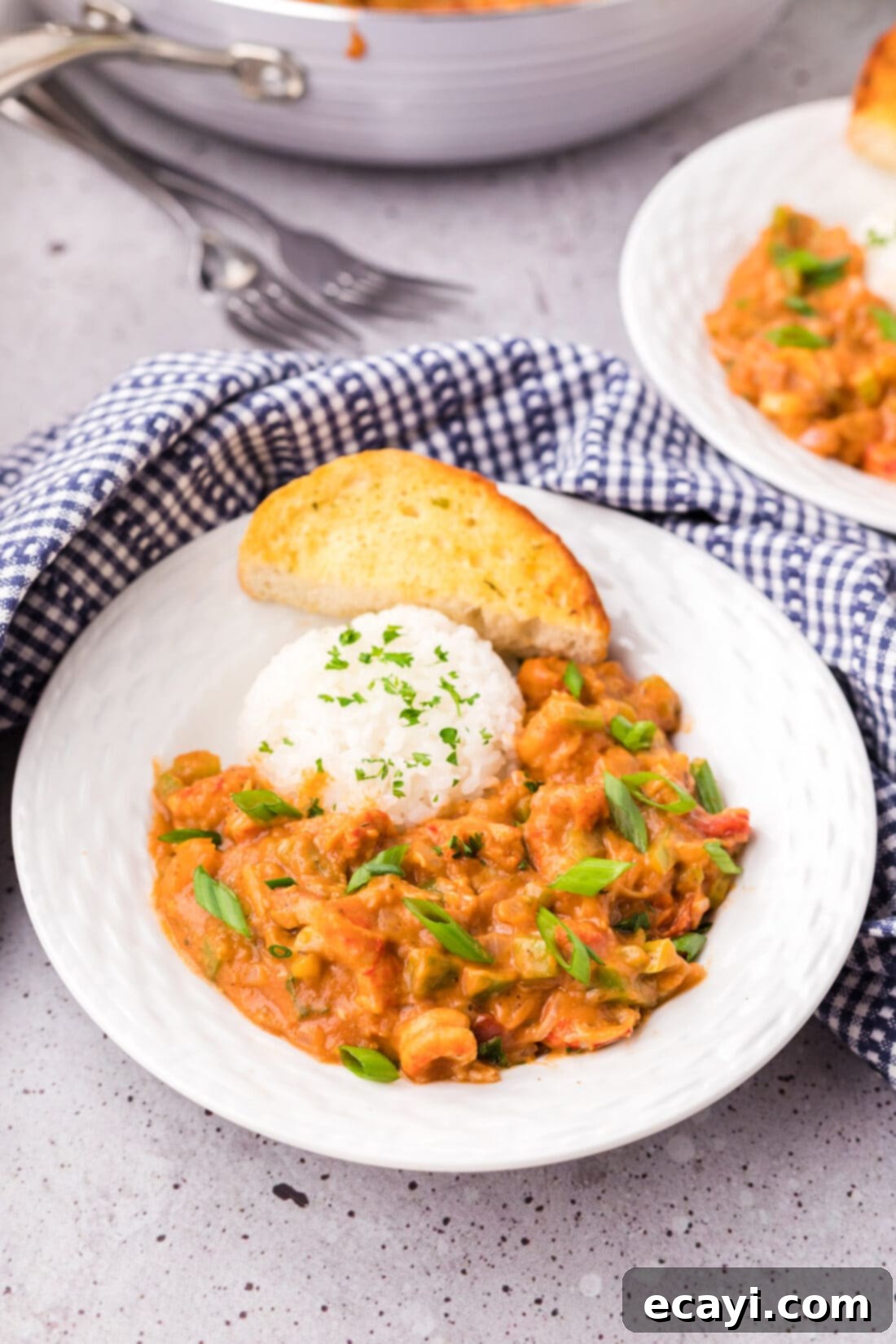
Expert Tips for the Best Crawfish Etouffee:
- Don’t Overcook the Crawfish: Since most commercially available crawfish tail meat is already cooked, the key is to gently heat it through without overcooking. Overcooked crawfish can become rubbery. Add it towards the end of the cooking process.
- Taste and Adjust: Cajun and Creole cooking is all about flavor! Always taste your etouffee before serving and adjust the seasonings. You might want more Cajun seasoning for extra spice, or a pinch more salt and black pepper. A dash of hot sauce at the table is also a popular choice.
- Perfect Roux Color: While this recipe uses a lighter roux, if you desire a deeper, nuttier flavor, you can cook the roux slightly longer until it’s a peanut butter color. Just be sure to stir constantly to prevent burning.
- Serve it Hot: Etouffee is best served piping hot over a bed of fluffy white rice. The warm rice absorbs the rich sauce beautifully.
- Garnish for Freshness: A sprinkle of freshly sliced green onions (scallions) or chopped fresh parsley over the top adds a touch of color and fresh herbaceousness that brightens the entire dish.
Delicious Serving Suggestions for Your Etouffee
Crawfish etouffee is a wonderfully satisfying meal on its own, but traditional accompaniments elevate the experience to true Southern comfort. The most classic pairing is with hot, fluffy long-grain white rice. The rice is essential for soaking up every drop of that rich, flavorful sauce, creating a harmonious bite. To complete the meal, serve it alongside warm, crusty garlic bread or a slice of cornbread, perfect for dipping into the last bits of gravy. For an added touch of freshness and vibrant color, consider garnishing your bowls with thinly sliced green onions (scallions) or a sprinkle of fresh chopped parsley. A simple side salad can also offer a refreshing contrast to the richness of the etouffee, making for a truly complete and unforgettable Southern feast.
More Irresistible Southern-Inspired Recipes
- Classic Jambalaya
- Savory Dirty Rice
- Traditional Shrimp Boil
- Hearty Shrimp Etouffee
- Authentic Shrimp Creole
I absolutely adore sharing my passion for baking and cooking, and providing insights from my kitchen experiences with all of you! It can sometimes be challenging to remember to check back daily for new content, which is why I offer a convenient newsletter delivered right to your inbox every time a new recipe is posted. Simply subscribe today and start receiving your free daily recipes to inspire your culinary adventures!

Crawfish Etouffee
IMPORTANT – There are often Frequently Asked Questions and Expert Tips within the blog post that you may find incredibly helpful. Simply scroll back up to read them for more insights!
Print It
Pin It
Rate It
Save ItSaved!
Ingredients
- 3 Tablespoons olive oil
- ½ Tablespoon minced garlic
- ¼ cup diced onion
- 3 Tablespoons minced shallots
- 2 Tablespoons all purpose flour
- ½ cup diced green bell peppers
- ½ cup diced celery
- 2 bay leaves
- 1 cup chicken stock
- ½ Tablespoon Old Bay seasoning
- ½ Tablespoon Cajun seasoning
- 2 Tablespoons Worcestershire sauce
- 8 ounces tomato sauce
- 1 pound crawfish tail meat thawed
- 3 Tablespoons chopped cherry tomatoes
- 3 Tablespoons butter
Things You’ll Need
-
Large heavy bottomed skillet
Before You Begin
- For convenience, you’ll typically find pre-cooked crawfish tail meat available in the freezer section of your local grocery store. If you are experienced with preparing raw crawfish, feel free to cook it yourself beforehand or sauté it along with the garlic, onion, and shallots for added flavor.
- To store leftovers, transfer the cooled crawfish etouffee into an airtight container and refrigerate for up to 2-3 days. Reheat gently on the stovetop or in the microwave, adding a small splash of water or chicken stock if needed to maintain its rich consistency.
- This dish is also freezer-friendly! Once completely cooled, transfer the crawfish etouffee to an airtight, freezer-safe container or a large ziptop bag, ensuring some space is left for expansion. It can be frozen for up to 3 months. When ready to serve, thaw it overnight in the refrigerator and then reheat on the stovetop.
Instructions
-
In a large heavy-bottomed skillet, melt the butter, then add the olive oil and heat over medium-high heat. Add garlic, onion, and shallots, and sauté until the onion is translucent and fragrant.
-
Create a roux by adding flour and stirring continuously for 2-3 minutes until lightly golden.
-
Add green bell pepper, celery, and bay leaves. Pour in the chicken stock and stir to combine smoothly. Cook for 2-3 minutes, stirring occasionally, allowing the sauce to thicken slightly.
-
Stir in the Old Bay seasoning, Cajun seasoning, Worcestershire sauce, tomato sauce, thawed crawfish meat, and chopped cherry tomatoes.
-
Reduce heat to low and simmer for 5-7 minutes, just enough to heat through the crawfish and allow all the flavors to fully blend. Remove bay leaves before serving.
Nutrition
The recipes on this blog are tested with a conventional gas oven and gas stovetop. It’s important to note that some ovens, especially as they age, can cook and bake inconsistently. Using an inexpensive oven thermometer can assure you that your oven is truly heating to the proper temperature. If you use a toaster oven or countertop oven, please keep in mind that they may not distribute heat the same as a conventional full sized oven and you may need to adjust your cooking/baking times. In the case of recipes made with a pressure cooker, air fryer, slow cooker, or other appliance, a link to the appliances we use is listed within each respective recipe. For baking recipes where measurements are given by weight, please note that results may not be the same if cups are used instead, and we can’t guarantee success with that method.

